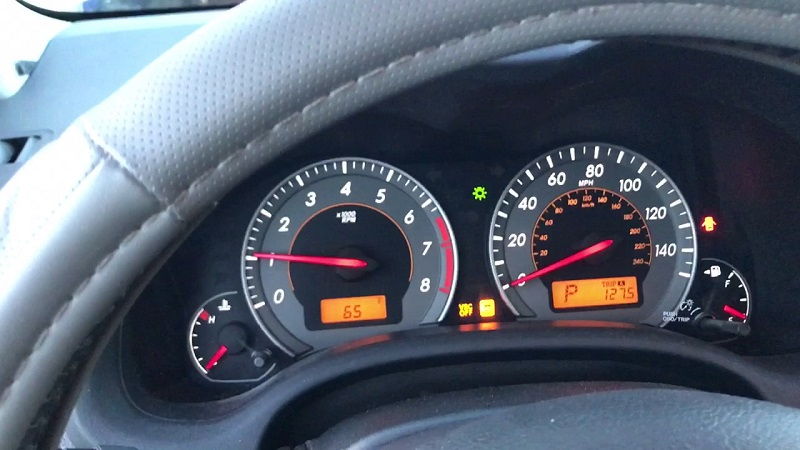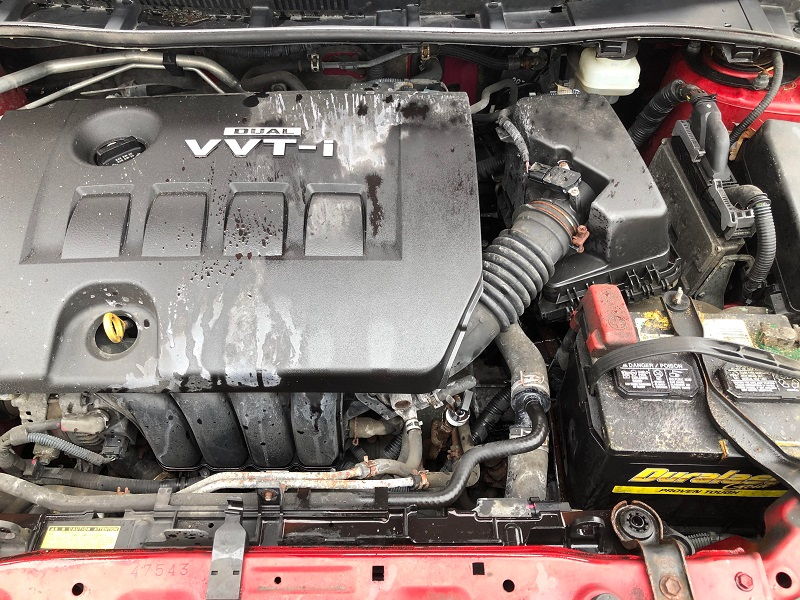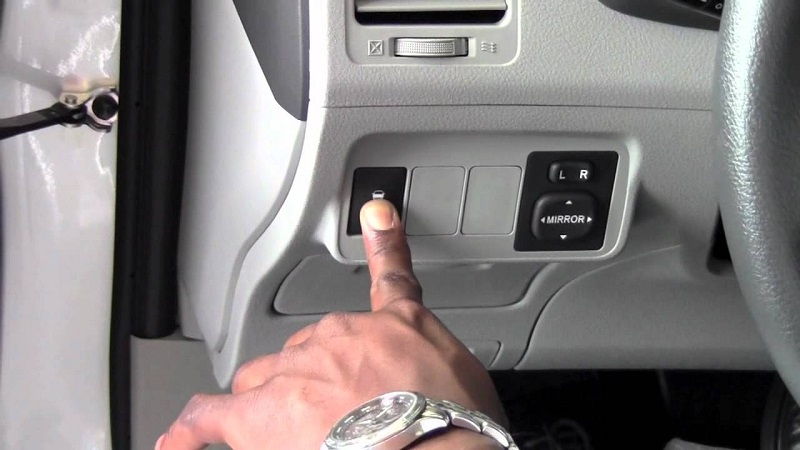This post contains affiliate links. This means I will make a commission at no extra cost to you should you click through and make a purchase [ “As an Amazon Associate, I earn from qualifying purchases.” ]. Read the full disclosure here.
VSC Off Toyota Corolla 2010 GuideMechanic.Com Are you the proud owner of a Toyota Corolla 2010? If so, you may have noticed a button labeled “VSC Off” on your dashboard.
This feature, known as Vehicle Stability Control Off, can be a mystery to many drivers. In this blog article, we will delve into the details of the VSC Off system in the Toyota Corolla 2010, providing you with a comprehensive guide to help you understand its purpose, functionality, and how to use it effectively.
Before we dive into the specifics, it’s important to understand the importance of vehicle stability control. Developed by Toyota, VSC is a safety feature designed to help drivers maintain control of their vehicles during challenging driving conditions.
See Also: Toyota Yaris Dashboard Lights
The system uses various sensors and components to detect and correct any loss of traction or stability, ensuring a safer driving experience for all occupants.
Understanding the VSC System

When it comes to vehicle stability control, the Toyota Corolla 2010 is equipped with an advanced system that utilizes cutting-edge technology to keep you safe on the road.
The VSC system in this model consists of several components working together seamlessly to ensure optimal stability and control.
Sensor Integration
The VSC system in the Toyota Corolla 2010 relies on a network of sensors strategically placed throughout the vehicle. These sensors monitor various parameters, such as wheel speed, steering angle, yaw rate, and lateral acceleration. By constantly analyzing these inputs, the VSC system can detect any potential loss of control and intervene to stabilize the vehicle.
Electronic Control Unit (ECU)
At the heart of the VSC system lies the Electronic Control Unit, or ECU. This sophisticated computerized module processes the data received from the sensors and makes split-second decisions to activate specific components, ensuring the vehicle remains on its intended path. The ECU continuously evaluates the vehicle’s stability and traction, adjusting brake pressure and engine power as necessary.
Brake Actuators
The VSC system utilizes brake actuators to provide precise control over each wheel’s braking force. In the event of a potential loss of control, the ECU can selectively apply braking to individual wheels to counteract oversteer or understeer. By modulating the brake pressure, the VSC system can help the driver regain control and prevent the vehicle from spinning out or skidding.
The Purpose of the VSC Off Button

Many drivers wonder why there is a button to turn off the VSC system. While the VSC system is a vital safety feature, there are specific instances where temporarily disabling it may be advantageous. The VSC Off button allows drivers to take full control of their vehicle’s performance under certain circumstances.
Enhanced Traction in Specific Situations
In some cases, such as when driving on slippery surfaces like deep snow or loose gravel, the VSC system may restrict wheel spin to maintain stability.
However, this can limit forward progress and hinder the driver’s ability to navigate challenging terrain. By deactivating the VSC system, drivers can allow controlled wheel spin, which may improve traction and help the vehicle move forward more effectively.
Driving Techniques and Motorsports
For those who engage in motorsports or high-performance driving, the VSC system’s intervention may interfere with specific driving techniques or maneuvers.
By disabling the VSC system, drivers can have more control over their vehicle’s dynamics, allowing for techniques like controlled drifts or precise cornering. However, it’s crucial to note that these activities should only be performed in controlled environments, following all safety guidelines.
When to Use the VSC Off Feature
Knowing when to use the VSC Off feature is crucial to ensure a safe and enjoyable driving experience. While there are specific scenarios where turning off the VSC system may be beneficial, it’s important to exercise caution and understand the potential risks involved.
Off-Road Adventures
If you’re planning an off-road adventure with your Toyota Corolla 2010, you may find it beneficial to turn off the VSC system. When traversing rough terrains or climbing steep grades, the VSC system’s intervention may limit your vehicle’s ability to overcome obstacles.
By deactivating the VSC system, you can have more control over your vehicle’s power delivery and wheel spin, allowing for a smoother off-road experience.
Deep Snow or Loose Gravel
When driving on surfaces with poor traction, such as deep snow or loose gravel, the VSC system’s intervention may hinder your vehicle’s ability to maintain forward momentum.
By temporarily disabling the VSC system, you can allow controlled wheel spin, which can help dig through the snow or gain traction on loose surfaces. However, always exercise caution and adapt your driving techniques to the specific conditions.
How to Activate and Deactivate VSC Off

Activating and deactivating the VSC Off feature in your Toyota Corolla 2010 is a straightforward process. However, it’s crucial to follow the correct steps to ensure you engage or disengage the system properly.
Activating VSC Off
To activate the VSC Off feature, start by locating the VSC Off button on your dashboard. The button is typically labeled “VSC Off” or may have a symbol resembling a vehicle skidding.
See Also: Toyota Highlander Braking Power Low
With the vehicle stationary or in park, press and hold the VSC Off button for a few seconds until you see a notification on your instrument panel confirming that the VSC system is now turned off.
Deactivating VSC Off
To deactivate the VSC Off feature and re-engage the VSC system, follow the same steps as activating it. Press and hold the VSC Off button for a few seconds until the instrument panel displays a confirmation message indicating that the VSC system is now activated.
Remember to reactivate the VSC system when you no longer require the additional control or traction allowed by the VSC Off feature.
Common Misconceptions about VSC Off
There are several misconceptions and myths surrounding the VSC Off feature in the Toyota Corolla 2010. Let’s debunk some of these misconceptions and provide accurate information to help you better understand the functionality and purpose of this feature.
Myth: Disabling VSC Off Improves Performance in All Conditions
Contrary to popular belief, disabling the VSC system does not automatically enhance your vehicle’s performance in all conditions.
While there are specific situations where turning off the VSC system can be advantageous, it’s crucial to assess the driving conditions and exercise caution.
The VSC system is designed to enhance safety and stability, and disabling it without proper justification may increase the risk of loss of control in certain scenarios.
Myth: VSC Off Equals Complete Disengagement of Safety Systems
Disabling the VSC system through the VSC Off feature does not mean that all safety systems in your Toyota Corolla 2010 are deactivated.
The VSC Off feature primarily affects the vehicle stability control system, allowing for more control over certain driving dynamics. Other safety features, such as Anti-lock Braking System (ABS) and traction control, remain active to ensure optimal safety during your drive.
The Relationship Between VSC and Other Safety Systems
The VSC system is just one of many safety features in your Toyota Corolla 2010. Understanding the relationship between VSC and other safety systems can provide valuable insights into your vehicle’s overall safety capabilities.
Anti-lock Braking System (ABS)
The ABS and VSC systems work in conjunction to enhance your vehicle’s stability and control. While the ABS primarily focuses on preventing wheel lock-up during braking, the VSC system intervenes to correct any potential loss of vehicle stability.
See Also: P0330 Toyota: What Is The P0330 Error Code
These systems share sensor inputs and communicate with each other to ensure coordinated and effective control under various driving conditions.
Traction Control System (TCS)
The Traction Control System, or TCS, is another safety feature closely related to the VSC system. The TCS helps prevent wheel spin during acceleration, ensuring optimal traction and stability.
While the VSC system primarily operates during dynamic maneuvers or when the vehicle starts to skid, the TCS complements it by preventing wheel slip under normal driving conditions.
Electronic Stability Control (ESC)
Electronic Stability Control, or ESC, is an advanced safety feature that encompasses both the VSC and TCS systems. ESC provides a higher level of integration and coordination between these systems, offering enhanced stability and control across a wide range of driving situations.
ESC is designed to intervene earlier and more effectively than standalone VSC and TCS systems, further improving your vehicle’s safety performance.
Tips for Safe Driving with VSC
While the VSC system is designed to enhance safety, certain driving habits and conditions can still pose risks. By following these tips, you can maximize the benefits of the VSC system while minimizing any potential drawbacks.
Adapt Your Driving to Road Conditions
Regardless of the VSC system’s capabilities, it’s crucial to adapt your driving techniques to the specific road conditions. Avoid sudden acceleration, braking, or steering inputs that may exceed the limits of your vehicle’s grip. By driving defensively and anticipating potential hazards
Regularly Maintain Your Vehicle
To ensure the VSC system functions optimally, it’s essential to maintain your Toyota Corolla 2010 regularly. Follow the manufacturer’s recommended maintenance schedule, which includes tasks such as brake inspections, tire rotations, and fluid checks.
Well-maintained brakes and tires contribute to the effectiveness of the VSC system, enhancing your vehicle’s overall stability and control.
Keep Your Tires in Good Condition
Tires play a crucial role in maintaining traction and stability, especially when it comes to the effectiveness of the VSC system. Make sure your tires are properly inflated and have sufficient tread depth.
Worn-out or underinflated tires can compromise the VSC system’s ability to function optimally, so regular tire maintenance is essential for safety on the road.
Troubleshooting and Maintenance
Like any other component of your vehicle, the VSC system may require occasional troubleshooting and maintenance. Understanding common issues and how to address them will help ensure your VSC system operates smoothly and reliably.
Diagnostic Trouble Codes (DTCs)
If your VSC system encounters a malfunction, it may trigger a Diagnostic Trouble Code (DTC), which can be read using an OBD-II scanner. DTCs provide specific information about the issue affecting your VSC system, allowing you or a qualified technician to diagnose and resolve the problem effectively.
Professional Inspection and Repair
If you experience persistent issues with your VSC system or if you receive a DTC indicating a problem, it’s recommended to seek professional inspection and repair.
See Also: Toyota Corolla Dashboard Symbols and Meanings
Certified technicians with expertise in Toyota vehicles will have the necessary tools and knowledge to diagnose and fix any VSC-related issues.
Advancements in VSC Technology
Over the years, vehicle stability control technology has evolved significantly. Manufacturers, including Toyota, continue to enhance and refine VSC systems to improve safety and driving performance.
While the Toyota Corolla 2010 features a reliable VSC system, it’s worth exploring the advancements and future possibilities in this area.
Integration with Advanced Driver Assistance Systems (ADAS)
Modern vehicles are increasingly equipped with Advanced Driver Assistance Systems (ADAS), which utilize various sensors, cameras, and radar to provide additional safety features.
The integration of VSC with ADAS technologies allows for even more precise and proactive control over the vehicle’s stability, further enhancing safety on the road.
Artificial Intelligence and Machine Learning
Advancements in artificial intelligence and machine learning have the potential to revolutionize vehicle stability control systems. By analyzing vast amounts of data in real-time, AI-powered VSC systems can adapt and optimize their interventions based on individual driving styles, road conditions, and other factors. This level of customization and adaptability promises to provide an even higher level of safety and performance.
Improved Sensor Technology
Sensor technology plays a critical role in the effectiveness of VSC systems. Ongoing advancements in sensor technology, such as more accurate and responsive sensors, can enhance the speed and precision of the VSC system’s interventions. This can result in even smoother and more seamless control during challenging driving situations.
In conclusion, understanding the VSC Off feature in the Toyota Corolla 2010 is essential for every owner. By familiarizing yourself with its purpose, functionality, and how to use it effectively, you can optimize your driving experience and ensure the safety of yourself and your passengers. Remember, always exercise caution and make informed decisions when engaging or disengaging the VSC Off system in your Toyota Corolla 2010.
See Also: Toyota Dashboard Symbols and Meanings
Related video of The VSC Off Feature in the Toyota Corolla 2010: A Comprehensive Guide
- Vegan Food Trucks for Sale by Owner - July 12, 2025
- Ice Cream Food Trucks for Sale - July 11, 2025
- Breakfast Food Trucks for Sale - July 11, 2025
